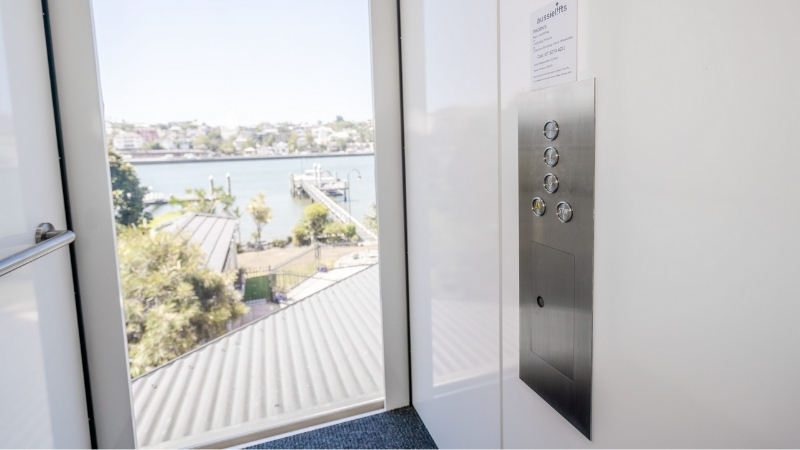Resources
Newsletter
Stay up to date and with the latest news, projects, deals and features.
SubscribeOne of the few positives to emerge from the onset of the Covid-19 pandemic is that the demand for Australian-made products has never been stronger.
Along with the obvious economic growth benefits for the entire nation, there are many other short- and long-term benefits of purchasing a locally manufactured product.
Australian Lift manufacture Aussie Lifts general manager Martin Karlsen says Australia's quality and safety standards are legislated, so all manufactured products must meet them.
“Along with the peace of mind that comes with managed quality and safety benefits and strict adherence to local production standards there are also more options and flexibility for customisation, the certainty of reliable warranties and guarantees; and a greater emphasis on environmental sustainability,” Karlsen said.
And put simply, when the benefits of purchasing locally are clear: when you buy Australian products, the value you spend stays in Australia and therefore supports Australian jobs.
According to statistics issued by Australia Made, every $1 million of manufacturing business in Australia generates ten full-time jobs, tax revenue of $333,900, welfare benefit savings and added value to the tune of $985,000.
“When buying Australian-made, you are also ensuring adherence to our stringent environmental guidelines and policies during the manufacturing processes,” Karlsen said.
“ All this is worth considering in when it comes to Aussie Lifts products, which—with only an eight-week lead time—are designed, completely assembled, rigorously tested, and commissioned at its facility in Brisbane's Acacia Ridge prior to delivery to site.”
The installation time is minimal, too: typically one to three days depending on the model and specifications, and any additional parts or modifications required to suit the application can be quickly accommodated.
In this way, Aussie Lifts is able to eliminate many of the delays associated with imported products, which are typically delivered to site in their component form flat- packed, which requires additional space for unpacking and assembling, and customers can expect from seven to 14 days to complete the installation.
Further adding to this, any modifications required at this stage may result in additional parts being sent from the overseas supplier and project delays while waiting for delivery.

And in terms of the sales process, Aussie Lifts’ sales consultants work with clients every step of the way, from an initial site visit to working with the builder, and the provision of site-specific engineering drawings and 3D-modelling including cosmetic selections.
“ Flexibility is key in understanding that requirements can change, and Aussie Lifts can quickly accommodate any changes to specification,” Karlsen said.
“Designing and building lifts for more than 25 years, Aussie Lifts has also has a technical support team available 24 hours a day, with comprehensive product knowledge that means team members are often able to address issues over the phone without the expense of sending a technician.
This eliminates another issue commonly encountered with imported lifts, with product ranges coming into Australia constantly changing, meaning it is not always possible to keep a full stock of parts for each model, nor are there guarantees that parts will be available into the future.
“Not to mention the further problems that can arise should a local agent not be able to resolve a technical issue, and the time-consuming process involved in getting a resolution from the overseas manufacturer, with many service companies refusing to maintain any lifts aside from their own,” Karlsen said.
“Further peace of mind for Aussie Lift customers comes from the fact that the product has been designed and built from the ground up to meet and exceed the Australian standards and Building Codes, with extensive engineering also undertaken to provide a certified wind category rating to include a C1 cyclone rating.”
In contrast, imported products are typically designed to a range of international standards and sometimes modified to meet Australian requirements.
It is worth asking what standard the lift has been design-registered to and whether or not it is the correct standard for your premises.
It is also worth determining if your building certifier will sign off on a product that does not meet the building code requirements that may be better suited for residential use.
Because the Aussie Lifts product is pre-built and tested prior to arriving at premises, installation costs are comparatively low.
Costs aren't subject to fluctuations in exchange rates and don't need to pass on the high transportation costs of delivering products from overseas.
Typically, as a complete turnkey solution, Aussie Lifts products are a more cost-effective option and because Aussie Lifts can custom-build a lift to suit individual premises rather than the builder undertaking additional building works to fit a lift with set dimensions, the project costs can be minimised.
Additionally, Aussie Lifts products are all contained within a self-supporting shaft, therefore, no structural walls are required to the lift shaft.
With all its products certified as Australian-made, Aussie Lifts is proudly supporting the local economy, both during the pandemic and beyond.
The Urban Developer is proud to partner with Aussie Lifts to deliver this article to you. In doing so, we can continue to publish our free daily news, information, insights and opinion to you, our valued readers.